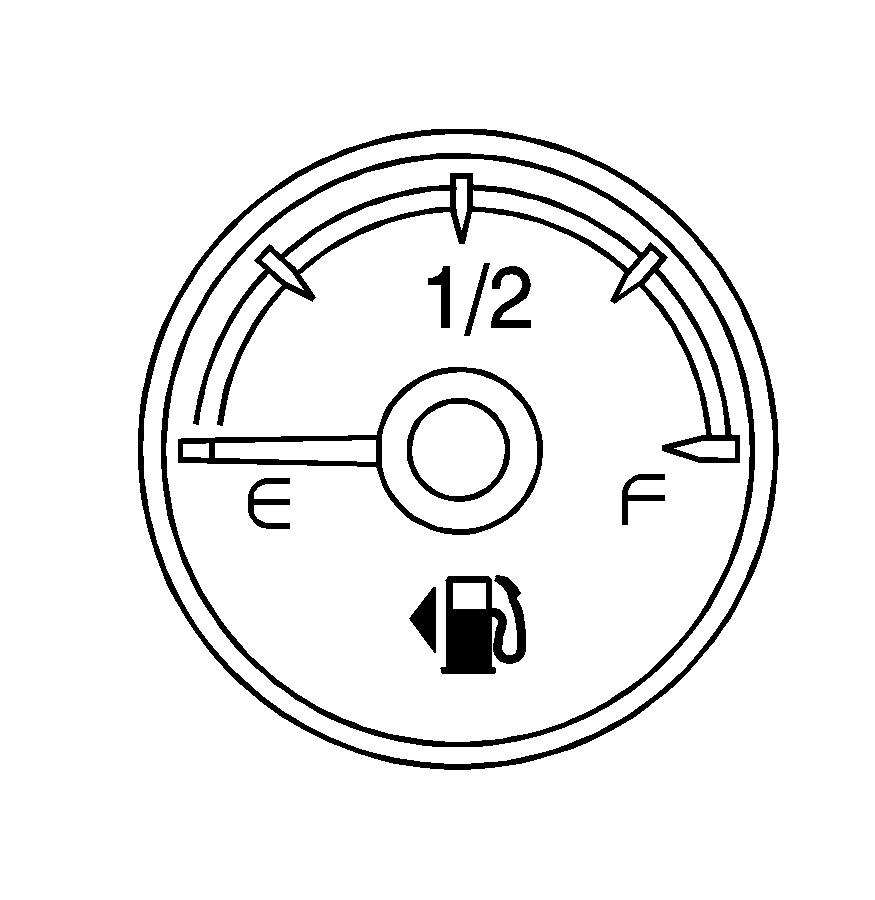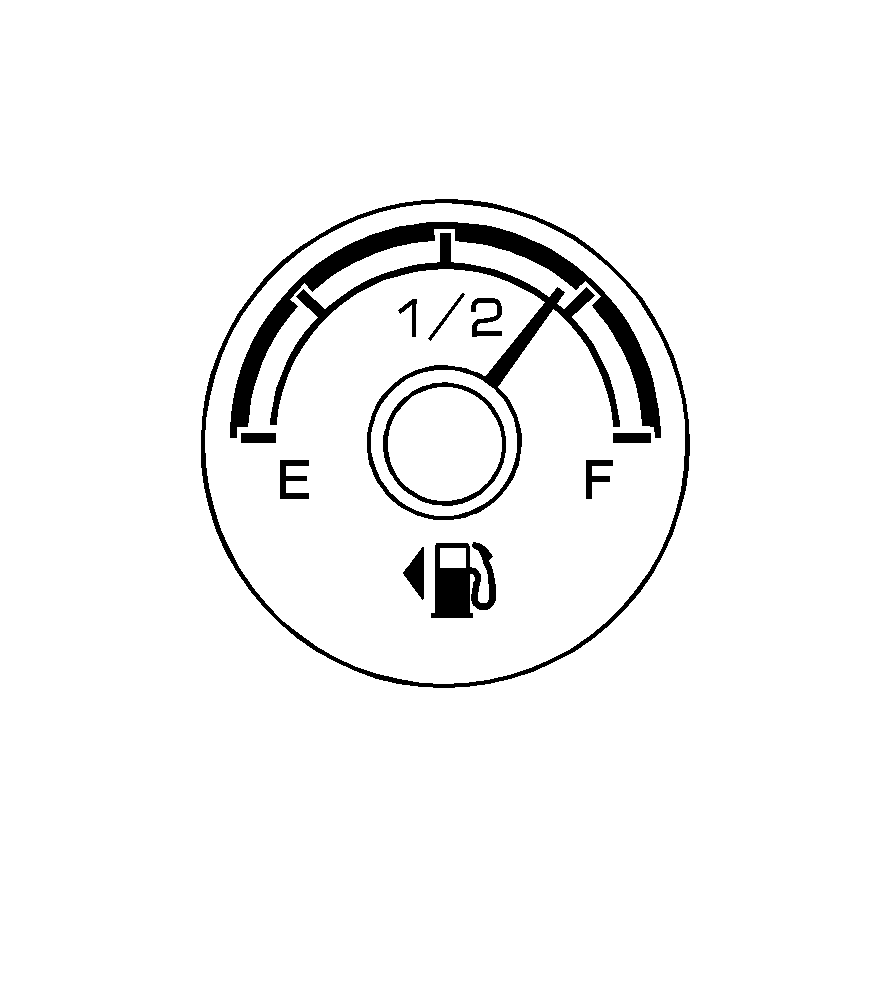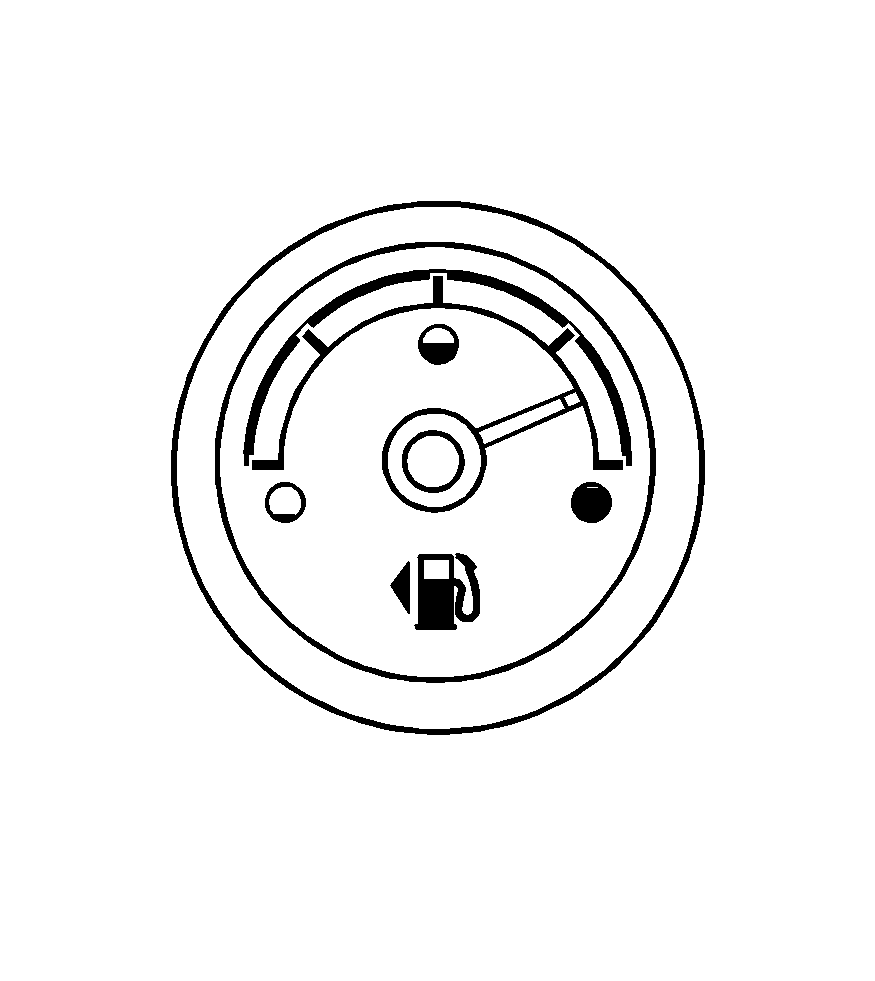United States

Canada

The fuel gage, when the ignition is on, shows how much fuel the vehicle has left in the fuel tank.
An arrow on the fuel gage indicates the side of the vehicle the fuel door is on.
The gage first indicates empty before the vehicle is out of fuel. The vehicle's fuel tank should be filled soon.
When the fuel tank is low, the FUEL LEVEL LOW message will appear. See DIC Warnings and Messages.
Here are some situations customers experience with the fuel gage. None of these indicate a problem with the fuel gage.
| • | At the gas station, the fuel pump shuts off before the gage reads full. |
| • | It takes a little more or less fuel to fill up than the fuel gage indicated. For example, the gage may have indicated the fuel tank was half full, but it actually took a little more or less than half the fuel tank's capacity to fill it. |
| • | The gage goes back to empty when the ignition is turned off. |
United States

Canada

When the ignition is on, the fuel gage shows approximately how much fuel is left in the tank. The gage will first indicate E (empty) before it is out of fuel, but the vehicle should be refueled as soon as possible.
An arrow on the fuel gage indicates the side of the vehicle the fuel door is on.
Listed are four situations that may occur with the fuel gage, none of these indicate a problem:
| • | At the gas station, the fuel pump shuts off before the gage reads F (full). |
| • | It takes a little more or less fuel to fill up than the fuel gage indicated. For example, the gage may have indicated the tank was half full, but it actually took a little more or less than half the tank's capacity to fill the tank. |
| • | The gage moves a little while turning a corner or speed up. |
| • | The gage does not go back to E (empty) when the ignition is turned off. |
